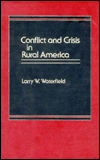(reprinted from: http://www.banderabulletin.com/articles/2006/10/24/news/513.txt
By
Jessica Hawley-Jerome - Managing Editor
Over 100 ranchers, farmers, horse
lovers and property owners gathered last
week at the Pipe Creek Community
Center, each seeking translation for a
wafting murmur that reeks of the
ultimate big brother intrusion. Most left
the Thursday-night town hall
meeting prepared for what some may consider a
revolution.
The issue at
hand that had the crowd up in arms is a government plan labeled
the National
Animal Identification System (NAIS - pronounced [nase]).
Reportedly buried in
2004 farm bill HB1361 after being lobbied by
industrial-agricultural
companies, NAIS was allegedly conceived for the
purpose of safeguarding the
country's meat supply by controlling the
outbreak of communicable, deadly
disease. What the public fears, however, is
the apparent grander
scheme.
"The time has come to pay closer attention to how the government
is ruling
our lives," Rancher Karen Brown said. "The USDA continues to
misrepresent
this as a volunteer program. In Texas, the penalty is up to
$1,000 a day and
may include jail time for failure to comply. A system that
carries penalties
is not a voluntary system."
According to Brown, the
Texas Animal Health Commission (TAHC) has launched a
mail campaign which
urges land and animal owners to register their
properties with the
government. At this point, Brown said, it is not
mandatory to fill out the
surveys, nor are those who receive the mailings
required to send them
back.
The plan purportedly calls for creating a premises identification
number for
all registered properties where livestock is located; radio
tagging or
microchipping all agricultural animals, including cattle, poultry,
pig,
deer, bison, equine and exotics; and 24-hour animal tracking, which
will
require extensive reporting to detail when a registered animal is
relocated,
whether permanently for market sale or temporarily for a show or
trail ride.
"That is probably the most offensive part of the system,"
Brown said. "The
cost of this program is going to be borne by people who own
animals. People
like us, people with small farms are going to disappear from
the market. We
just won't be able to absorb the cost."
Debbie Davis, a
longhorn rancher in Tarpley, said that she signed up with
the program two
years ago. Regretting the action and now better informed,
Davis helped found
The Farm and Ranch Freedom Alliance (FARFA), a lobbying
organization built to
protect small farmers against systems like NAIS and
corporate
interference.
Davis said the first step in the fight is to vote for
people who are against
NAIS.
She said the Talent Emerson Bill, which
is scheduled to be entered into
Congress in December, will be the first
statute to make NAIS a strictly
voluntary program if approved. NAIS was
unanimously passed two years ago
because representatives neither knew about
the program nor that it was
hidden in the Christmas Tree house bill. Only one
house representative,
Suzanna Hupp, insisted that her vote be changed after
the bill passed.
Davis also said that those who have signed and returned
the mailed NAIS
forms still have an opportunity, and the legal right, to
withdraw now.
NAIS was originally destined to become a mandatory program
by July of 2005.
Due to mass protest, however, Brown said that the TAHC
stalled the target
date to 2007.
According to Davis, Wisconsin,
Indiana and Michigan have already implemented
mandatory participation, under
the leadership of extension agencies touting
disease control as the number
one priority. Texas may be next on the list.
"The USDA does not know how
to ID disease," Brown said. "They have one
policy for disease control -
wholesale slaughter."
Brown said that if a diseased animal is discovered,
all species susceptible
to the disease will be immediately killed within a
six-and-one-quarter mile
radius, regardless of the animals' health
status.
"I don't find that acceptable," Brown said. "My horses will be
going
somewhere else."
Dan Cox of the Barrel House in Pipe Creek said
that he has a USDA license
for selling feed, as well as a limited species of
exotics.
Brown said that a backdoor compliance measure may prohibit feed
stores and
veterinarians from providing services to customers without a
premises ID.
Furthermore, feed store owners and vets may be enforced to
report
non-complying customers to the USDA or TAHC.
"They'll just have
to close me down," Cox said. "I'll be danged if I become
an informant on my
neighbors."
Brown said that enforcement of NAIS will sabotage the system
by creating a
black market for agricultural needs. If an animal is diseased,
for example,
owners will be unlikely to seek legitimate veterinarian care,
which could
cause a serious, if not deadly, outbreak.
Ron Hickerson,
who spearheaded the campaign against NASE in Bandera County,
spoke briefly
from a veteran's point of view in opposition to the slippery
slope of
large-scale surveillance.
"This is the first time in the history of our
country that citizens have had
to report their movements to the government,"
Hickerson said. "As a veteran,
I look at this as a violation of my
constitutional rights."
County commissioners will be called to the plate
on Thursday, Oct. 26, when
they will be asked to review and consider for
action a resolution opposing
NAIS and the proposed Texas Regulations for
Mandatory Premises Registration.
"We need a resolution signed countywide
opposing NAIS until the system is
abolished," Brown said. "There is strength
in numbers."
For a list of representatives and organizations in support
of and opposed to
NAIS, visit
www.farmandranchfreedom.org.
 DOG LAW, 4TH EDITION
DOG LAW, 4TH EDITION

People Promoting and People Opposing Animal Rights: In Their Own Words

The Trouble With Medical Journals

0714680907:Product Link on Barnes & Noble.com.













